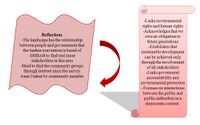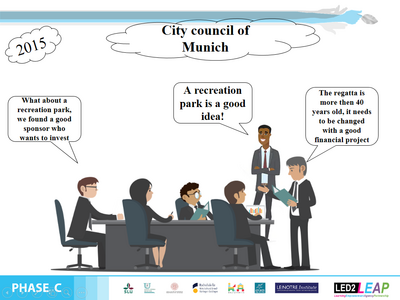LED2LEAP 2020 - Freising Team 9: Difference between revisions
| Line 205: | Line 205: | ||
<gallery caption=" " widths="400px" heights="300px" perrow="3"> | <gallery caption=" " widths="400px" heights="300px" perrow="3"> | ||
File: | File:yourcase_prototypes1.jpg|''add a caption'' | ||
</gallery> | </gallery> | ||
| Line 213: | Line 213: | ||
<gallery caption=" " widths="400px" heights="300px" perrow="3"> | <gallery caption=" " widths="400px" heights="300px" perrow="3"> | ||
File: | File:yourcase_prototypes1.jpg|''add a caption'' | ||
</gallery> | </gallery> | ||
| Line 221: | Line 221: | ||
<gallery caption=" " widths="400px" heights="300px" perrow="3"> | <gallery caption=" " widths="400px" heights="300px" perrow="3"> | ||
File: | File:yourcase_prototypes1.jpg|''add a caption'' | ||
</gallery> | </gallery> | ||
| Line 229: | Line 229: | ||
<gallery caption=" " widths="400px" heights="300px" perrow="3"> | <gallery caption=" " widths="400px" heights="300px" perrow="3"> | ||
File: | File:yourcase_prototypes1.jpg|''add a caption'' | ||
</gallery> | </gallery> | ||
| Line 237: | Line 237: | ||
<gallery caption=" " widths="400px" heights="300px" perrow="3"> | <gallery caption=" " widths="400px" heights="300px" perrow="3"> | ||
File: | File:yourcase_prototypes1.jpg|''add a caption'' | ||
</gallery> | </gallery> | ||
Revision as of 09:03, 1 July 2020
>>>back to working groups overview
| Area | The Olympic rowing regatta course | |
| Place | Oberschleißheim, Munich | |
| Country | Germany | |
| Topics | Landscape Democracy | |
| Author(s) | Naida Kiso, Feryal Halimi, Oluwapelumi Adesoye, Simanta Dash | |

| ||
Landscape Democracy Rationale
- From a landscape democracy perspective, this community context is relevant because it's about a group of people coming together in the same place, to use beautiful landscape for the same interest, and that interest, is engaging in all kinds of sports and leisure activities. This community uses the same area of land to fulfill their human rights for engaging in sports activities.This is where we see the bridging of landscape and human rights which represent landscape democracy.
- This way of use of land is very beneficial for wellness and human health which also helps this landscape area to keep its sports spirit and character.
Location and scope
Phase A: Mapping your Community
Welcome to your community and its landscape
- The Olympic rowing regatta course is located six kilometres north of the Olympic Park, half on Munich soil, half on Oberschleißheim soil, in the Dachauer Moos and covers an area of 850,000 square metres.
- Historical place
- The Olympic Games competition venue
- It represents a piece of post-war heritage
- The facility needs renovation
Groups of actors and stakeholders in your community
- Main Actor groups: Olympic Park, Authority, Clubs/stakeholders, Athletes
- Sub-actor groups: Employee, Visitors, Recreationists
- More Visible groups: athletes
- Less visible groups: visitors
- Do to this Corona situation, we don’t know opinions of local people and all our work is based on assumptions and research through internet.
Relationships between your actors and groups
- Main actor groups are larger groups and they are in power over the smaller sub-actor groups
- add 1-2 graphical representations to the image gallery based on your PPT presentation, you can add more if you like
Summary of your learnings from the transnational discussion panel on April 22
On April 22 you will present the PPT version of this first assignment to other seminar groups working in other geographical community contexts. Please give here a short summary of your learnings during this presentation, for example:
- Other analytical approaches
- Other representation styles
- Other value schemes: any surprises?
- Constructive comments we received on our presentation
Theory reflection
- Stories of Collective Capital is useful to gather and sense the community characteristics and create a foundation for future positive changes.
- The landscape has the relationship between people and governments that the Aarhus convention is based of
- Links environmental rights and human rights
- Acknowledges that we owe an obligation to future generations
- Establishes that sustainable development can be achieved only through the involvement of all stakeholders
- Links government accountability and environmental protection
- Focuses on interactions between the public and public authorities in a democratic context.
References
- Site: https://www.unece.org/info/ece-homepage.html
- Site: file:///C:/Users/PC/Desktop/Kuehne_Antrop_LandscapeConcepts.pdf
- Site: https://regatta.bayern/en/olympic-regatta-center/
- Site: https://www.openpetition.de/petition/online/munich-oberschleissheim-save-the-regatta
- Site: https://www.leistungszentrum-muenchen.de/en/
Phase B: Democratic Landscape Analysis and Assessment
The Scene in your Story of Analysis
- Our challenge; This project is premised on the frequent clashes that occur between the different demography of people who utilize the Olympic Rowing Regatta Course facilities; with emphasis on the sweet-sour relationship between professional athletes and recreationists. This problem is largely due to the multifarious activities happening concurrently on the project site as well as its extensive footprint.
- The Olympic Rowing Regatta Course is a purpose-built sporting facility designated as the venue for Rowing and Canoeing events of the 1972 Summer Olympics. It is located approximately 6km north of the Olympic park and covers an area of about 850,000 square metres. The implication of this sprawling area is that the centre sits partly on Munich soil as well as in Oberschleif3heim, Dachauer Moos. This immense post-war heritage features a 2.23km long, 140m wide and 3.5m deep artificial Regatta Course, asphalt tracks for cycling, tennis courts, volleyball etc. It also has a network of ancillary facilities, including, gymnasiums, restaurants, conveniences, accommodation, campground etc. The idyllic development is surrounded by an eclectic land-use ranging from agricultural farmlands, grazing pastures and protected forests to other more "urban" typologies.
The Actors in your Story of Analysis
- Main actors in the story are internal stakeholders who have the most profound impact on the project and play significant roles in the administration of the facility.
They include: Government and other regulatory agencies Olympic Park Authority - Stakeholders - Sponsors Athletes
- SUB-ACTORS
Also playing significant roles, albeit on a much smaller scale, the sub-actors are stakeholders who are affected by the outcomes of the main players. They include: Employees - Volunteers Recreationists Tourists
The Story of Analysis
- Our story revolves around a recreationist named Hanz.
Hanz likes spending his weekends in the regatta course of Munich, to enjoy the magnificent scenery there and practice his favorable hobbies, cycling and jogging that helps him to relax from the long working week. but Hanz finds some difficulties in practicing what he loves freely around the regatta as he often gets into some conflicts with the professional athletes practicing in the same area as they find recreationsts a bothering for their activities.
- How can Hanz practice in the regatta course without having any conflicts with anyone? without bothering the athletes or other recreationists?
Reflect on your Story of Analysis
- IN DEVELOPING AN ALL-INCLUSIVE, WORKABLE DESIGN SCHEME, IT IS IMPORTANT TO IDENTIFY THE PROJECT STAKEHOLDERS ARE AT ALL LEVELS; THIS WILL BE INVALUABLE GUIDE IN THE DESIGN PROCESS AS THEIR PARTICIPATION WILL ENSURE THAT COMMUNAL EXPECTATIONS ARE MET UPON COMPLETING THE PROJECT.
- THE BUFFET METHOD IS IDENTIFIED AS AN APPROPRIATE DESIGN APPROACH IN THE DIVERSE MUNICH-OBERSCHLEIgHEIM COMMUNITY. THE VARIOUS STAKEHOLDERS COME FROM DIFFERENT WALKS OF LIFE, HAVE DIFFERENT VIEWS AND OPINIONS WHICH INVARIABLY SHAPE THEIR RESPECTIVE EXPECTATIONS. THIS METHOD HELPS BRING EVERYONE TOGETHER WITHOUT ANY BIAS AND ENGAGES THEM IN A PRODUCTIVE ENDEAVOUR THAT WILL HELP SHAPE THEIR COMMUNITY.
- ALL CONVERSATIONS AT THE BUFFET PLUS THE DESIGN OUTCOMES POSITED BY THE DIFFERENT COMMUNITY MEMBERS (BASED ON THEIR INDIVIDUAL EXPERIENCES AND LEVELS OF EXPOSURE) WILL HELP GUIDE THE DESIGN PROFESSIONALS DURING THE DESIGN AND PROJECT IMPLEMENTATION PHASES, ENSURING THAT A FULLY FUNCTIONAL,
Phase C: Collaborative Visioning and Goal Setting
The Scene in your Story of Visioning
- Reiterate your landscape democracy challenge, by making a problem statement based on your landscape evaluation and the results of your Phase B assessment. Describe your challenge by digging further into the the physical scene and the community associated with this place.
- add the corresponding visual from your presentation to the image gallery below
The Actors in your Story of Visioning
- Describe the particular characters that are going to participate in the visioning phase. Why were they chosen to participate and where will the visioning phase happen?
- add the corresponding visual from your presentation to the image gallery below
The Story of Visioning
- Describe the crux of the story. How did the actors engage in collectively developing the goals, and what was the process involved in prioritizing them? Slide 1
- What is the visualization, the actual vision, that expresses the synthesis of these prioritized goals? Slide 2
- What is the strategy that was built for attaining one of these goals, the three year plan of action? Slide 3
- add the corresponding visual from your presentation to the image gallery below
Reflect on your Story of Visioning
- What points were most important when formulating goals and what are the common characteristics of a good vision?
- add the corresponding visual from your presentation to the image gallery below
Phase D: Collaborative Design, Transformation and Planning
Your Prototyping Action
- What was your prototyping action? What does it represent and how does it relate to your vision from Phase C?
- add the corresponding visual from your presentation to the image gallery below
- Yourcase prototypes1.jpg
add a caption
The Evolution of Your Prototyping Action
- Describe the actors who were working together on this action. What was your collaborative design process? What tools or methods did you use to collaborate?
- add the corresponding visual from your presentation to the image gallery below
- Yourcase prototypes1.jpg
add a caption
The Plan Behind Your Prototyping Action
- What resources, material and human, did you need to realize your action, and how were they used? What roles were created for this action? Additionally, What kind of timeframe was created for executing the plan?
- add the corresponding visual from your presentation to the image gallery below
- Yourcase prototypes1.jpg
add a caption
The Realization of Your Prototyping Action
- What happened, who was there and what was the atmosphere like among the participants?
- add the corresponding visual from your presentation to the image gallery below
- Yourcase prototypes1.jpg
add a caption
Reflect on Your Prototyping Action
- In the end, what change did the intervention create? How would you adjust it to be more effective if you did it again? Consider what it means to be successful, what indicators would you use to measure success in this endeavor? Most importantly, how did your intervention reflect the material in the Phase D lectures?
- add the corresponding visual from your presentation to the image gallery below
- Yourcase prototypes1.jpg
add a caption
Phase E: Collaborative Design, Transformation and Planning
* template coming
= Phase E: Collaborative Evaluation and Future Agendas * template coming
Process Reflection
- Difficult to find real inner stakeholders in this area
- Hard to find the community groups through internet since the survey wasn’t taken by community membrs
























